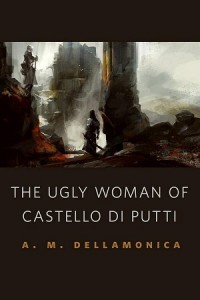 Tor.com has released the cover for a story I sold Ellen Datlow not long ago, “The Color of Paradox.” The image is by Jeffrey Alan Love and it’s very creepy and appropriate. I feel as though I could fall into it, staring for endless hours… or possibly just until the kittens do something irresistible. (Attention spans are lamentably short at Dua Central right now.)
Tor.com has released the cover for a story I sold Ellen Datlow not long ago, “The Color of Paradox.” The image is by Jeffrey Alan Love and it’s very creepy and appropriate. I feel as though I could fall into it, staring for endless hours… or possibly just until the kittens do something irresistible. (Attention spans are lamentably short at Dua Central right now.)
The elongation of the figure and its placement in the upper left corner draw the eye first, delaying the moment when you track down to the city and see that Bad Things are happening. The brushwork is delightfully scratchy, and naturally I headed right off to Love’s blog to see what the rest of his work looked like. He’s got an image for Tolkien’s Beowulf that is sheerly amazing, and I liked his take on Excalibur, “The Sword in the City” very much.
“The Color of Paradox” is a first attempt to write something I have been trying to wrap my head around for years: a series or novel or some damned thing set in a universe where there’s time travel, but it only moves backward. All of the missions are one-way missions. You can receive instructions and resources from the future, but your only option for responding is to essentially leave time capsules where nobody else will find them.
It is also one of those stories that grabbed me and wouldn’t let go. I dropped everything and wrote it in a bit of a mad haze. It’s very different from Stormwrack and the impulse was probably driven by a desire to write in a different key.
Another thing about the story that delights me is having gotten to work with Ellen Datlow again, because she is a brilliant and generous editor and it had been too long since I had anything to send her.
It will be live on the Tor site and readable, for free, on June 25th, the same day Child of a Hidden Sea hits bookstores.









